The following guide will lead you through the steps of a dehumidifier setup so your house can always stay in the ideal humidity range. This article will explain all the tips and tricks to get the dehumidifier working at its best and also improve the quality of air in your house, whether you are fighting with the issue of high humidity levels in the summer time or are concerned about the moisture gathering in winter months.
Understanding Your Dehumidifier
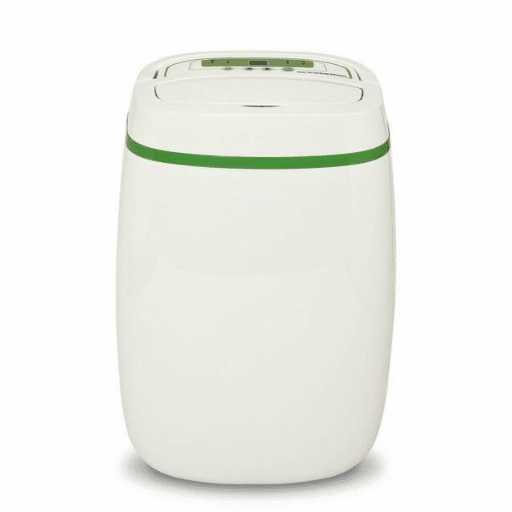
A dehumidifier is a completely in-the-home device that is used to regulate and reduce the humidity levels through the process of extracting excessive moisture from the air. It operates by taking air in through its intake, cooling it down to the point where the moisture condenses and forms water droplets, and then finally expelling the air that has lost its moisture back into the room.
The whole cycle goes on to prevent the creation of mold, dampness, and air quality issues which culminate in an environment that is not only unhealthy but also quite difficult to live in. The main infection of mildew and decay, as well as stale air, is entirely eliminated with the help of this amazing appliance.
Types of Dehumidifiers
Refrigerant (Compressor-Based) Dehumidifiers
The most common dehumidifiers for both household and commercial uses are those based on compressor technology. The principle behind their functioning is that they pull humid air, cool it over refrigerated coils to condense the moisture, and again let out the air with less moisture. It works extremely well in hot and humid climates but loses its power in low-temperature regions.
Desiccant Dehumidifiers
Although desiccant dehumidifiers are designed for colder climates, they can use materials such as silica gel which takes moisture from the air. The moisture is then dried up by the heating process. These devices generally are less noisy and more mobile, so they can be used in places like basements, crawl spaces, or cold areas.
Thermoelectric (Peltier) Dehumidifiers
They are perfect for small spaces like bedrooms or closets; these tiny dehumidifiers apply the Peltier effect to cool a plate, which leads to moisture being condensed. These dehumidifiers are also quieter and consume less energy, but their capacity is so limited that they are not able to work in large, heavily humid areas.
Whole-House Dehumidifiers
Installed alongside HVAC systems, whole-house dehumidifiers not only control but also equalize high humidity areas in a home. They are perfect for advanced humidity control, yet they demand specialist installation alongside a bigger initial expense.
Portable Dehumidifiers
Portable models are light and easy to use, and they are suitable for single rooms or specific areas. They are versatile and come in different sizes, but their efficiency is directly related to choosing the right size and humidity level model.
How a Dehumidifier Works
A dehumidifier works by removing water vapor from the air in order to keep the humidity at the desired level, which is usually between 30% and 50%. This is done by drawing the air into the unit with a fan and then making it go through refrigerated coils. When the air is cooled, it can hold less water vapor, and thus, the water vapor condenses on the coils.
The water that is collected is either stored in a tank or drained out. The air that has lost its moisture is then heated up again and pumped back into the room, thus creating a loop that effectively controls indoor humidity.
Benefits of Using a Dehumidifier
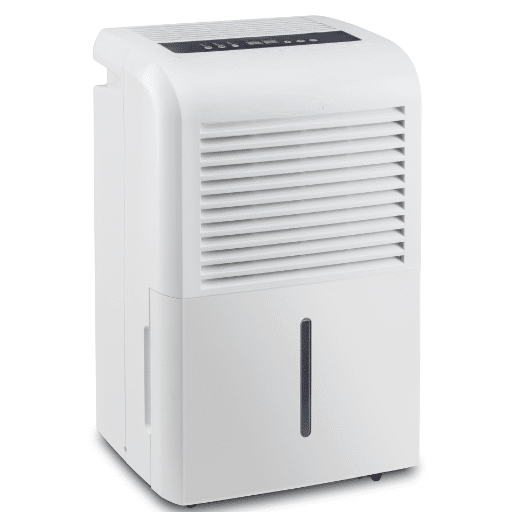
One of the key benefits of using a dehumidifier is that it helps in the control of indoor air quality thus making at home a more pleasant atmosphere. Key benefits include:
- Health Protection: Prevention of mold, mildew, and dust mites, which are the most common allergens, contributing to better respiratory health, particularly for those with asthma or allergies
- Property Protection: Controlled humidity levels ensure that furniture, electronics, and household structures such as walls and flooring are protected from moisture-related damage
- Extended Lifespan: Protecting your belongings and structures prolongs their overall lifespan
- Energy Efficiency: Modern energy-efficient models consume less electricity while still performing optimally
- Smart Features: App-based monitoring and programmable settings allow precise control over humidity levels
Setting Up Your Dehumidifier
Installing your dehumidifier in the right manner is a prerequisite to reaping its benefits and having the indoor air quality to your liking. Follow these essential steps:
Choosing the Right Location
The device should be placed in areas where humid air accumulates, such as:
- Basements
- Laundry rooms
- Near bathrooms
- Centrally located rooms with good ventilation
Spacing Requirements: Leave at least 6-12 inches of space on all sides of the dehumidifier to allow air to circulate freely. Do not position the appliance next to walls, drapes, or furniture that could obstruct the airflow.
Preparing the Dehumidifier for Use
- Unbox Carefully: Check for any shipping damage and discard all packaging materials, including protective films
- Choose the Right Spot: Select a centrally located area with sufficient air circulation and close access to an electrical outlet
- Install Collection System: Ensure the collection bucket or drainage hose is installed correctly to prevent leaking
- Connect to Power: Plug into a properly grounded electrical outlet
- Clean the Filter: Check and clean the filter before first use
Initial Setup Instructions
| Step | Action | Details |
|---|---|---|
| 1 | Position Unit | Place in central spot with proper air circulation, away from walls or obstructing objects |
| 2 | Check Power | Connect to grounded outlet matching manufacturer’s voltage specifications |
| 3 | Clean Filter | Follow user guide instructions for initial filter maintenance |
| 4 | Set Humidity | Adjust to 30-50% range based on your environment |
Adjusting Humidity Levels
Maintaining optimal indoor humidity levels requires both a well-thought-out strategy and consideration of environmental factors.
Optimal Humidity Levels for Different Spaces
| Space Type | Recommended Humidity | Purpose |
|---|---|---|
| Living Rooms & Bedrooms | 30-50% RH | Prevents mold and maintains comfort |
| Basements | 30-40% RH | Avoids structural damage and mildew |
| Bathrooms & Kitchens | ~50% RH | Manages excess moisture with efficient ventilation |
| Offices | 40-60% RH | Promotes health, productivity, and equipment function |
| Storage/Warehouses | 30-45% RH | Protects sensitive items (paper, electronics, pharmaceuticals) |
How to Set Your Dehumidifier’s Humidity Level
- Determine Target Range: Identify the ideal humidity range based on room use and items present (typically 30-50% RH for living areas)
- Turn On Unit: Power up the dehumidifier and access the control panel
- Set Desired Humidity: Use the digital interface to make accurate adjustments in 1% increments
- Verify with Hygrometer: Use a separate hygrometer to check actual humidity levels
- Optimize Placement: Position in the middle of the room with clear access to air intake and vents
- Monitor Regularly: Check water tank frequently and empty as needed
Monitoring Humidity Changes
To monitor changes in humidity effectively:
- Use high-quality hygrometers for precise measuring
- Maintain 30-50% relative humidity in indoor spaces
- For specialty storage (museums, archives), maintain stricter 40-45% ranges
- Consider smart monitoring systems with real-time data collection and automated alerts
Regular Maintenance of Your Dehumidifier
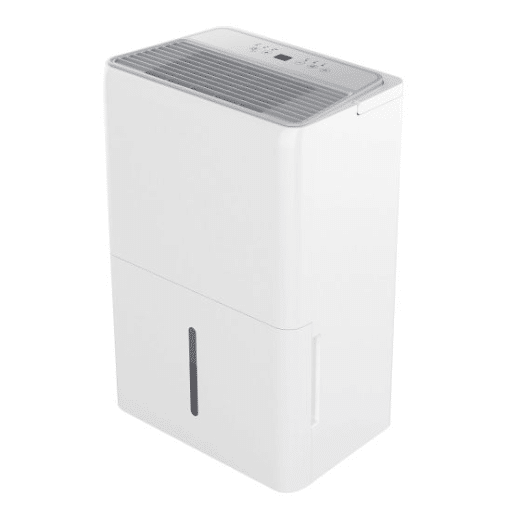
Cleaning Your Portable Dehumidifier
Recommended Frequency: Clean every two weeks for normal use, adjust based on environmental conditions and usage patterns.
Cleaning Steps:
- Unplug for Safety: Always disconnect power before cleaning
- Clean Water Tank: Remove, empty, and wash with warm soapy water to eliminate mold and bacteria
- Clean Air Filter: Check and clean at least every three weeks or per manufacturer instructions
- Clean Coils: Gently remove dust/debris from evaporator and condenser coils using a soft brush or vacuum with nozzle
- Check Drainage: Inspect drain hose for blockage, kinking, or leaking
When to Change Filters
| Usage Level | Replacement Frequency | Conditions |
|---|---|---|
| Normal Use | Every 1-3 months | Standard household environment |
| High Use | More frequently | High dust, pet dander, or pollen levels |
| Smart Units | As indicated | Follow indicator lights or app alerts |
Troubleshooting Common Issues
| Problem | Potential Causes | Solution |
|---|---|---|
| Not Powering On | No electricity supply, blown fuse, tripped circuit breaker, broken power cord | Check power supply, ensure outlet works, inspect cord for damage, reset breaker or change fuse |
| Not Removing Moisture Effectively | Dirty/clogged filter, room temperature too low, inadequate airflow | Clean or change filter, ensure proper temperature range, check for blocked vents |
| Frost Build-Up on Coils | Operating below 65°F, low refrigerant, airflow restriction | Use only at proper temperatures, check for blockages, may need refrigerant recharge |
| Water Tank Issues | Tank not placed properly, leaking, clogged drainage | Position tank correctly, check for breaks, replace if necessary |
| Unusual Noises | Loose internal parts, dirty fan, worn motor bearings | Turn off and check for loose parts, clean fan area, call professional if motor issue |
Advanced Dehumidifier Settings
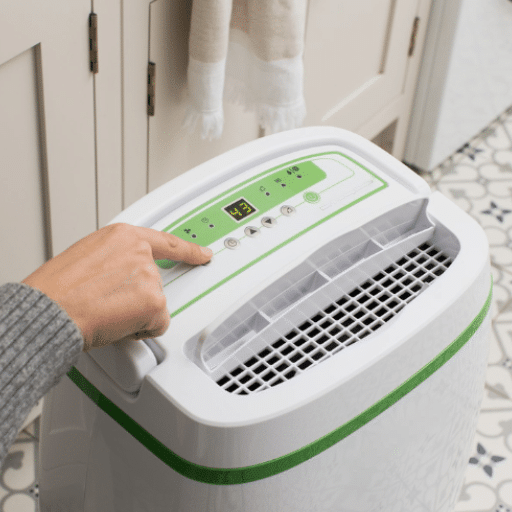
Smart Humidity Control
Modern dehumidifiers provide smart humidity control functions with integrated hygrometers that automatically maintain set RH levels (typically 30-50%) for comfort and mold prevention.
Scheduling and Timers
Programmable timers allow users to decide when the machine operates, leading to better energy usage by working only during needed hours, cutting energy costs while maintaining performance.
Air Purification Integration
Some dehumidifiers include air purification functions utilizing HEPA or activated carbon filters to remove dust and allergens, providing dual benefits of lowering humidity and purifying air.
Wi-Fi and App Connectivity
State-of-the-art dehumidifiers connect to Wi-Fi for mobile app control, allowing remote monitoring in real-time. Systems often include notifications for full tanks, filter changes, or broken parts.
Using Dehumidifier Timers and Modes
Operational Modes:
- Continuous Mode: Runs constantly until turned off
- Sleep Mode: Operates quietly during nighttime hours
- Auto Mode: Automatically checks and controls humidity by varying operation according to current conditions
Understanding Dehumidifier Settings for Energy Efficiency
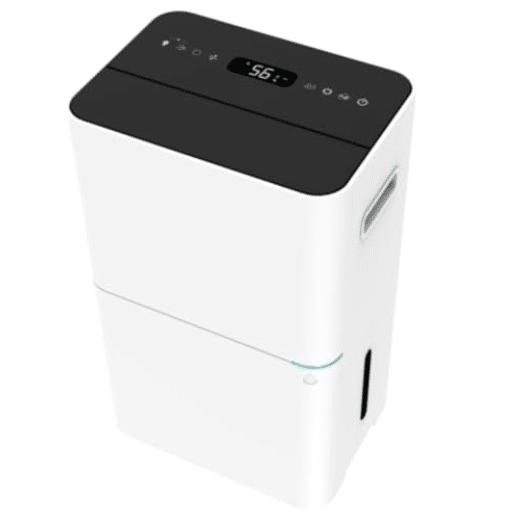
For energy savings, follow these guidelines:
- Set RH to 30-50%: Adjust according to environment and personal comfort
- Use Auto Mode: Consumes least energy by monitoring humidity and adjusting operation automatically
- Strategic Placement: Position in areas with most moisture (basement, bathroom)
- Use Programmable Timer: Set operation for early morning or late evening when humidity is highest
- Regular Maintenance: Clean air filter and ensure drainage system is unblocked
How to Set My Dehumidifier for Specific Needs
| Need | Recommended Setting | Notes |
|---|---|---|
| General Humidity Control | 30-50% RH | Best for comfort and preventing mold/mildew growth |
| High-Humidity Areas (Basements, Laundry) | 30-40% RH | Prevents condensation, odors, and structural damage |
| Summer Season | Mid-level settings, constant use | Cope with increased incoming moisture |
| Winter Season | Use sparingly, monitor closely | Avoid making air too dry |
| Allergy/Asthma Relief | 30-40% RH | Inhibits dust mites and mold spores |
| Preserving Valuables | 40-45% RH | Protects wood furniture, instruments, papers from warping/cracking |
References
-
“Aeon Air Dehumidifier Manual” – Includes information on using the hygrostat to set and maintain desired humidity levels.
-
“DEHUMIDIFIERS – Minnesota.gov” – Discusses features like built-in humidistats and how to set the desired relative humidity (RH) level.
-
“Residential Humidity Control Strategies” – Offers insights into humidity control strategies, including the use of dehumidifiers.
Frequently Asked Questions (FAQ)
What is the proper way to set your dehumidifier for best performance?
First of all, you need to find out how humid it is in your house, so use a hygrometer to find the relative humidity level. The most comfortable humidity for humans and plants is considered to be around 30-50%. When you are aware of the existing humidity, then set the dehumidifier in such a way that it is constantly maintaining the right humidity level. It means; you will be able to get rid of the humidity, mold, and musty odors more easily.
Which is the best location for the dehumidifier within the room?
The dehumidifier should be placed out of the reach of walls and furniture, as the latter would block the airflow. The best place to locate it would be at the center of the room, and where the humid air collects. This way, not only the dehumidifier would be more efficient as it would circulate the dry air in the whole room, but it also would help the dehumidifier itself take in the humid air more efficiently. Having your unit raised on some furniture is also a good idea for better performance.
How can I take the water out of my dehumidifier?
When you want to drain the water from your dehumidifier, first look for a built-in pump or a gravity drain option. If your unit has a tank, you will have to empty the tank each time it gets full. Some models also have the option for continuous drainage with a hose that is connected to a sink or drain, which can be very convenient if you need to have the dehumidifier working non-stop.
What capacity of a dehumidifier is necessary for my home?
The determination of the dehumidifier’s size is dependent on the level of moisture in your house and the dimensions of the room that you are going to dehumidify. The capacity of a dehumidifier is given as the number of pints of moisture removed daily. If you are dealing with very humid areas or considerable moisture in the air, then opt for higher capacity units that are there for your daily humidity control needs.
How can I change the settings on my dehumidifier?
Usually, you can change the settings on a dehumidifier with the help of the control panel, which allows you to set the humidity level that you want. Most dehumidifier models have a digital display that shows you the humidity setting you are selecting. There may also be options for fan speed and timer settings. Look into your user manual for particular guidance on making those adjustments for your specific model.
What are the signs that I must operate my dehumidifier?
The humidity that is present in your home may be the main reason why you need to run the dehumidifier. This is especially true during humid seasons or in places that are often damp because of the air humidity. High humidity can cause discomfort, mold growth, and damage to your possessions. It’s a sign for you to turn on the dehumidifier if you start smelling musty or see condensation on the windows.
Is it possible for air moisture to have a negative effect on health?
Air moisture has its health impact in a negative way by making the areas conducive for mold to grow, dust mites to breed, and other allergens to thrive. All these can result in respiratory problems, allergies, and general discomfort. It is advantageous to have a dehumidifier in the house that maintains low humidity; hence, it will help prevent health issues that are a result of excessive moisture.
What happens once the target level of humidity is achieved?
Dehumidifier usually gets shut off when the target level of humidity is achieved because it is a power-saving procedure. The same unit will become energy efficient. However, the humidity still has to be monitored regularly since the changes in temperature and humidity can cause the humidity to rise again which will lead to the dehumidifier being activated again.
Is it ok to have my dehumidifier turned on during the cold season?
It is perfectly fine to use dehumidifiers during winter months especially in areas where there are high levels of humidity. Low levels of humidity indoors in winter prevent condensation on the windows and hence, keep mold under control. But, you must make sure that the dehumidifier you are using is designed for low temperatures, as there are some models which do not work effectively during the colder period.



